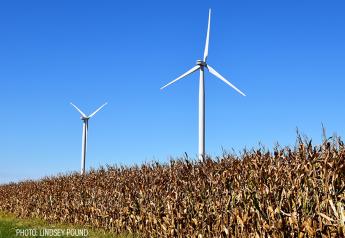Retailers Respond With Resilience
Amid today’s challenges, retailers are investing in their businesses and realizing their important role in the marketplace, particularly in regard to the seed business.
“In the context of seed, the retailer is the person who analyzes pest pressures, diseases, weather, and is positioned to help answer those challenges with a solution,” says Daren Coppock, president and CEO of the Agricultural Retailers Association.
Define Your Identity. Seed sales and service are significant parts of the River Valley Cooperative’s business. This year, the team at River Valley Cooperative in eastern Iowa launched a campaign solidifying its brand.
“It’s a rebirth of the River Valley story, ‘On the Ground Year Round,’ so our customers know we are by their sides to help their businesses in every season,” says Andy Rash, vice president of sales and marketing at River Valley.
Branding is a tool that retailers are relying on to establish and reinforce their capabilities with customers.
“It’s all about differentiation,” says agronomy manager Dan Olson with CHS Dakota Plains Ag in southern Minnesota. “Our customers lean on us to be cutting-edge and bring timely, relevant information. And if we can bring some branded products to continue to build their trust and support, that’s our core business—hands down.”
One such example is this year’s launch of Allegiant Seed by CHS.
“Farmers have access to information and can get it anywhere,” Olson explains. “What growers need from us is confidence in the product.”
Olson says test plots are key to demonstrating product performance—both with seed and crop protection.
“CHS Dakota Plains has 22 test plots dedicated to its products to showcase, build data and host field days,” says Steve Carlsen a technical specialist with West Central Distribution. “In this economy, as a retailer you differentiate your business when you’re able to keep it one-on-one with training and sales.”
Delivering Trust. “The retailers who have been successful focus on their customers, know their products, know their territory and do right by their customers,” Coppock says.
According to Farm Journal Media research, 70% of farmers look for consistent or strong yield performance when selecting seed.
Shift In Sales Training. Today’s technologies and market forces have led retailers to shift how they focus their time in product sales.
“There are two schools of thought—I want you to do it for me, or I want to learn,” Olson says. “Retailers need to want to be the local expert. And we want a strong partner who can come in and bring technical aspects while we bring the products that we know fit in the geographies.”
At CHS Dakota Plains Ag, sales managers spend 25% of their time on product training and delivering the message around the product.
Changes at River Valley Coop meant that the business brought a lot of its sales training in-house. Every sales meeting focuses on tactics.
“We leverage our partner’s expertise, but we needed to bear down and focus on our sales behaviors to give us the strongest brand, image and drive value on the farm,” Rash explains. “I look at sales as a sport—and it’s a contact sport—you have to sharpen yourself. You have to continue to develop.”







